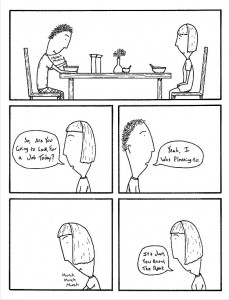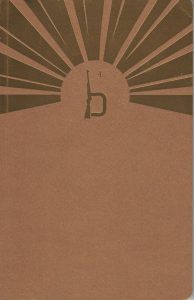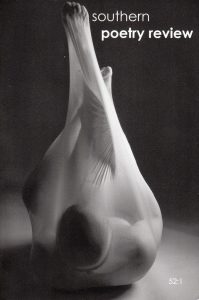Comics in Literary Magazines
Edward Chaney, in a post on Hayden Ferry Review‘s blog, thinks out loud about comics and their importance and place in literature. “There do not seem to be many venues to submit comics,” he writes, “and because the internet is so vast and full of content, unless you are among the lucky few to strike comedic gold, the comics will most often go unseen.” He then interviews Rob Stapleton, editor-in-chief of Booth magazine.
Stapleton explains that it is hard to define and come up with vocabulary for comics in literary journals. While Booth calls them “narrative comics,” he admits that even that might not be the best. “Still haven’t hit a bullseye with this vocabulary.” But whatever it is called, Stapleton makes it clear that Booth isn’t looking for the comic strips in the Sunday paper. He says that the comics are considered literature “when the artist understands and integrates the central tenets of story, character, and pathos.”
Chaney points out two good examples of the pieces that Booth publishes: “Death of a Monolith” by Dustin Harbin and “How I Came to Work at the Wendy’s” by Nick St. John. “I’m looking for comics that integrate humor and story, characterization and a unique worldview, a keen eye and a large, possibly bruised, heart,” says Stapleton.
And Stapleton plans to continue publishing them. But there are other magazines that are publishing them as well. Stapleton gives a few examples: Tin House, McSweeney’s, Virginia Quarterly Review, Barrelhouse, and The Florida Review.





